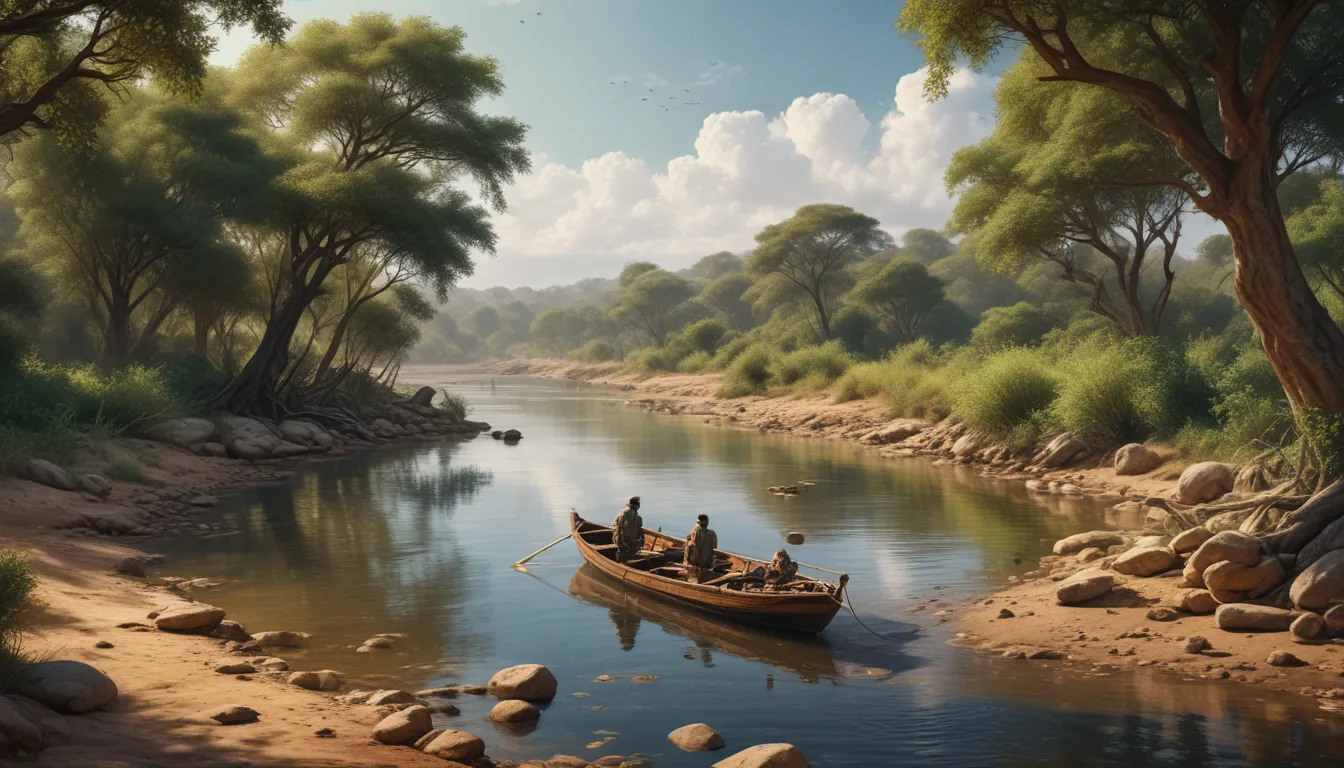The pictures we use in our articles might not show exactly what the words say. We choose these pictures to make you interested in reading more. The pictures work together with the words but don’t take their place. The words still tell you the important facts.
The Limpopo River, a majestic waterway flowing through Southern Africa, holds a special place in the hearts of many. From its origins in the Witwatersrand area to its meandering course through diverse ecosystems, the Limpopo River is a source of fascination and inspiration for visitors and locals alike. In this article, we will delve into the captivating world of the Limpopo River and unravel 16 intriguing facts that showcase its beauty, ecological significance, and historical importance. Let's embark on a journey of discovery as we explore the wonders of the Limpopo River.
Exploring the Vital Geographic Features
- Border Crossings: The Limpopo River forms natural boundaries between Botswana and South Africa, as well as South Africa and Mozambique, highlighting its essential role in shaping the region's geography.
- Impressive Length: Stretching for approximately 1,750 kilometers, the Limpopo River ranks among Africa's longer rivers, showcasing its significant presence in the landscape.
Uncovering the River’s Origins and Name
- Source of Origin: The Limpopo River originates in the Witwatersrand area, located south of Johannesburg, South Africa, serving as the starting point of its mesmerizing journey.
- Meaningful Name: The name "Limpopo" finds its roots in the Sepedi language, translating to "strong gushing waterfalls," perfectly encapsulating the river's powerful flow and cascading beauty.
Diverse Wildlife and Environmental Significance
- Abundant Wildlife: Teeming with crocodiles, hippos, and various fish species, the Limpopo River provides a habitat for diverse wildlife, attracting nature enthusiasts and animal lovers.
- Lifeline for Communities: Local communities along the river rely on its waters for sustenance, agriculture, and fishing, showcasing its vital importance in supporting livelihoods.
Natural Cycles and Unique Plant Species
- Seasonal Variations: The Limpopo River experiences both seasonal flooding and droughts, impacting the surrounding ecosystems and influencing the region's climate patterns.
- Botanical Diversity: Supporting a wide range of plant species, including the iconic baobab trees, the Limpopo River's banks are adorned with unique flora, enhancing its enchanting landscapes.
Historical Significance and Iconic Landmarks
- Historical Role: Throughout history, the Limpopo River has served as a route for exploration and trade, shaping the region's cultural heritage and providing a glimpse into its past.
- Landmarks Along the River: From ancient rock artworks to iconic bridges like the Giriyondo Border Post Bridge, the Limpopo River is adorned with significant landmarks that showcase its historical and geographical importance.
Cultural Inspiration and Recreational Activities
- Literary Influence: The enchanting beauty of the Limpopo River has inspired numerous works of literature and film, highlighting its allure and significance in the African landscape.
- Adventure Opportunities: Offering river safaris, canoeing, fishing, and wildlife tours, the Limpopo River attracts adventurous travelers seeking thrilling experiences and close encounters with nature.
Significance in Agriculture and Climate Patterns
- Irrigation Support: Playing a vital role in irrigation for agricultural activities, the Limpopo River provides essential water resources that sustain farming communities in the region.
- Climate Influence: The flow of the Limpopo River impacts regional climate patterns, influencing rainfall distribution and temperature variations in the surrounding areas.
Conclusion: Embracing the Marvels of the Limpopo River
In conclusion, the Limpopo River stands as a captivating natural wonder, weaving together rich history, biodiversity, and cultural significance. Whether you're exploring its diverse wildlife, embarking on a river safari, or simply marveling at its breathtaking scenery, the Limpopo River offers a multitude of experiences to satisfy your curiosity and spirit of adventure. As you immerse yourself in the beauty of Southern Africa's landscapes and ecosystems, let the Limpopo River guide you on a journey of discovery and appreciation for the wonders that await along its enchanting waters.
FAQs: Exploring More About the Limpopo River
- Length: The Limpopo River stretches approximately 1,750 kilometers (1,087 miles) in length.
- Countries: Flowing through Botswana, Mozambique, South Africa, and Zimbabwe, the Limpopo River traverses multiple nations.
- Wildlife: Serving as a vital water source, the Limpopo River supports a diverse range of wildlife, including elephants, hippos, crocodiles, and various bird species.
- Landmarks: Iconic landmarks along the Limpopo River, such as Crook's Corner, offer a glimpse into the region's historical and geographical significance.
- Recreational Activities: From canoeing and fishing to birdwatching and wildlife tours, the Limpopo River provides ample opportunities for engaging in recreational activities.
- Cultural Significance: The Limpopo River holds great cultural significance for indigenous communities, with traditions, rituals, and stories passed down through generations.
Embark on a journey of exploration and wonder as you uncover the captivating world of the Limpopo River, a natural marvel that continues to inspire and awe all who encounter its enchanting waters. Whether you're drawn to its diverse wildlife, historical landmarks, or cultural heritage, the Limpopo River invites you to embrace the beauty and significance of Southern Africa's landscapes. Join us in celebrating the marvels of the Limpopo River and the rich tapestry of experiences it offers to visitors from around the world.






